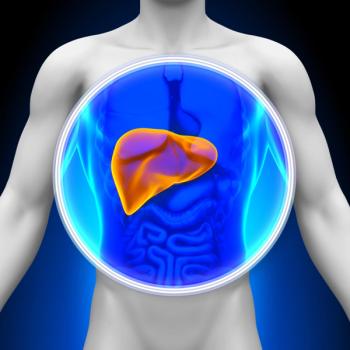
DNA Repair–Deficient Gastric Cancers Benefit From Olaparib/Paclitaxel
Treatment with the PARP inhibitor olaparib plus paclitaxel resulted in an overall survival benefit in patients with metastatic gastric cancer.
Treatment with the poly (ADP-ribose) polymerase (PARP) inhibitor olaparib plus paclitaxel resulted in an overall survival benefit in patients with metastatic gastric cancer with low or undetectable ataxia telangiectasia mutated (ATM) compared with treatment with paclitaxel alone, according to the results of a phase II study.
Yung-Jue Bang, MD, PhD, of Seoul National University College of Medicine in Korea, and colleagues wrote that these results suggest that “ATM status may be predictive of improved outcome to olaparib/paclitaxel.”
According to the study, low ATM expression has been linked with shorter survival in patients with gastric cancer who have undergone resection of their disease compared with patients with high ATM expression levels.
“A new ATM immunohistochemistry (IHC) test demonstrates that approximately 13% to 22% of tumors from patients with gastric cancer may have low or undetectable ATM expression (ATMlow),” the researchers
Bang and colleagues designed this study to investigate the efficacy of olaparib plus paclitaxel in patients receiving second-line treatment for their gastric cancer and assessed if ATM expression was predictive of improved response.
The study included 123 patients with recurrent or metastatic gastric cancer who were randomly assigned to oral olaparib 100 mg twice a day plus paclitaxel or placebo plus paclitaxel, followed by maintenance therapy with olaparib or placebo. About 14% of the patients in the study were classified as ATMlow. The primary endpoint was progression-free survival.
No significant improvement in progression was noted in patients who were treated with olaparib/paclitaxel compared with paclitaxel alone in the overall population (median progression-free survival, 3.91 vs 3.55 months) and the ATMlow population (5.29 vs 3.68 months).
However, treatment with the combination did result in a significant improvement in overall survival in both populations (overall: hazard ratio [HR] = 0.56 [80% confidence interval (CI), 0.41–0.75]; P = .005; ATMlow: HR = 0.35 [80% CI, 0.22–0.56]; P = .002). The median overall survival with the combination for the overall study population was 13.1 months compared with 8.3 months for paclitaxel alone; the median survival for ATMlow patients treated with the combination was not reached compared with 8.2 months for paclitaxel alone.
The researchers acknowledged that the study did not meet its primary endpoint, but added that “the difference between our progression-free survival and overall survival results probably results from the relatively small sample size and the exploratory nature of this phase II trial.”
“Our results suggest that, in the subset of patients with advanced gastric cancer who have ATMlow tumors and are enriched for functionally compromised ATM protein, olaparib plus weekly paclitaxel may be an effective targeted treatment,” the researchers wrote. “Further evaluation of this combination in a phase III trial in advanced gastric cancer is ongoing (NCT01924533).”
In an
However, she added that any future study of PARP inhibition in this cancer group “will require more comprehensive characterization of patients for not only ATM, but also p53, MSI, and the presence of driver mutations.”
Newsletter
Stay up to date on recent advances in the multidisciplinary approach to cancer.
































































































